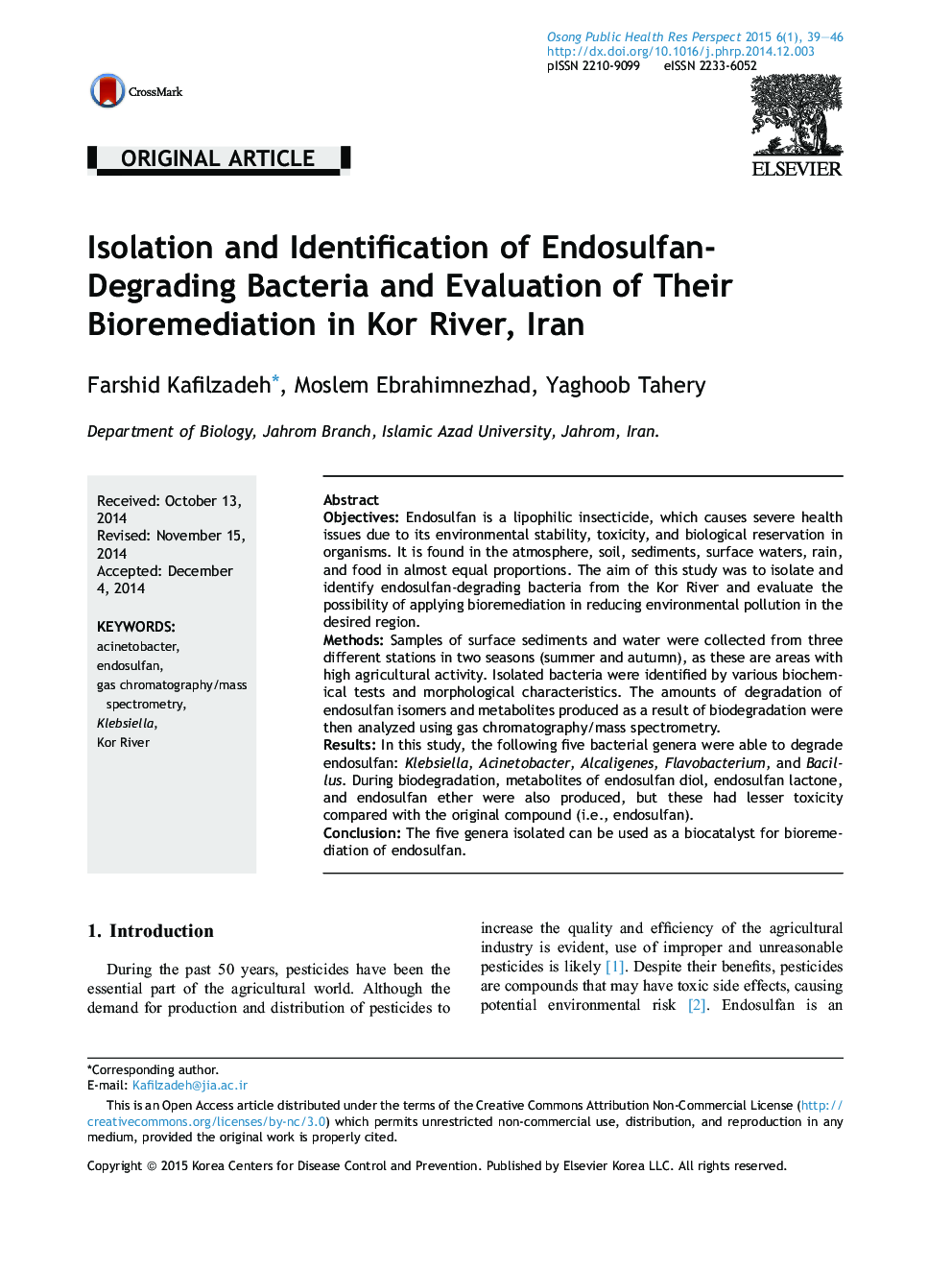| Article ID | Journal | Published Year | Pages | File Type |
|---|---|---|---|---|
| 4201954 | Osong Public Health and Research Perspectives | 2015 | 8 Pages |
ObjectivesEndosulfan is a lipophilic insecticide, which causes severe health issues due to its environmental stability, toxicity, and biological reservation in organisms. It is found in the atmosphere, soil, sediments, surface waters, rain, and food in almost equal proportions. The aim of this study was to isolate and identify endosulfan-degrading bacteria from the Kor River and evaluate the possibility of applying bioremediation in reducing environmental pollution in the desired region.MethodsSamples of surface sediments and water were collected from three different stations in two seasons (summer and autumn), as these are areas with high agricultural activity. Isolated bacteria were identified by various biochemical tests and morphological characteristics. The amounts of degradation of endosulfan isomers and metabolites produced as a result of biodegradation were then analyzed using gas chromatography/mass spectrometry.ResultsIn this study, the following five bacterial genera were able to degrade endosulfan: Klebsiella, Acinetobacter, Alcaligenes, Flavobacterium, and Bacillus. During biodegradation, metabolites of endosulfan diol, endosulfan lactone, and endosulfan ether were also produced, but these had lesser toxicity compared with the original compound (i.e., endosulfan).ConclusionThe five genera isolated can be used as a biocatalyst for bioremediation of endosulfan.
